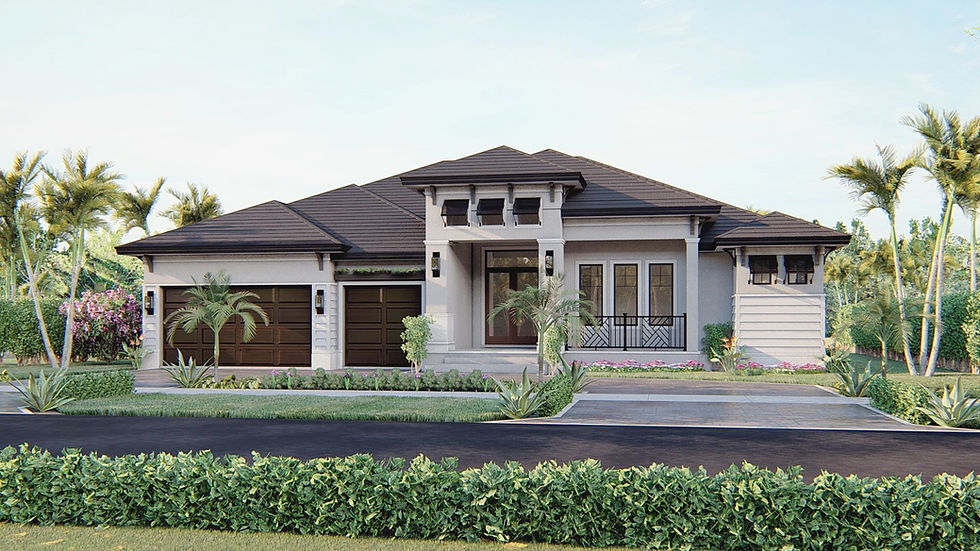Give Your Home a Facelift With New Color Scheme
- Nova Homes of South FL
- Apr 6, 2018
- 2 min read

Home Under Construction by Nova Homes of South Florida, Naples, Florida
Changing the color scheme of your home’s exterior is one of the quickest ways to give your house a face-lift, whether you’re preparing to list it for sale or just want to increase curb appeal (or both!). You might be surprised at the number of outside elements at play that you should consider before you choose a color scheme. Things like the hue of your brick chimney (is your brick more orange or brown?), the color your neighbor chose for their house, and your area of the country can all influence a color scheme. Plus, you’ll probably have to coordinate at least three colors — for the siding, trim, and accents. And this is a big investment, so it’s not very easy to change if you don’t love the end result, making what seems like a simple decision trickier than you might have expected.
1. The roof
If you have a brown roof, steer toward a warm siding color, like Sherwin-Williams’ Avenue Tan. If you have a gray or black roof, you can go cooler — Olympic’s Coast of Maine is a popular choice. Take a step back and observe any other fixed, unpaintable elements on your home’s exterior, like copper awnings, stone chimneys, and brick features.
2. Consider your neighbors
If one house next door to yours is navy-blue and another is white, you shouldn’t veer into warm-color territory or paint your house navy-blue or white (no one likes a copycat). Instead, match their home’s color intensity. Something like Benjamin Moore’s Wedgewood Gray would pair well: It stays in the cool spectrum and doesn’t duplicate their selections. You want to have personality but not stand out in a bad way.
3. Don’t ignore local cues
Beyond the colors on your block, do some research (you can probably just drive around your town!) to make sure your color scheme is historically and regionally appropriate. “Imagine the colors you see on homes in Key West,” says Amy Krane, an architectural color consultant. “Pink and turquoise feel natural in a tropical region but would be wholly out of place in the Midwest.”
4. Keep scale and depth in mind
The color of your home can trick the eye. For instance, painting your home a light color like Benjamin Moore’s November Rain can make it seem larger than it is and visually brings it forward to the curb. Conversely, dark colors can make a home look smaller but more substantial and set back — Benjamin Moore’s Boston Brick has this effect.
In Southwest Florida, homeowners are going bolder with darker colors. Nova Homes of South Florida a custom home builder since 2004, is building new and renovating older homes. Online at www.novahomesbuilder.com or 239.307.6116.












Comments